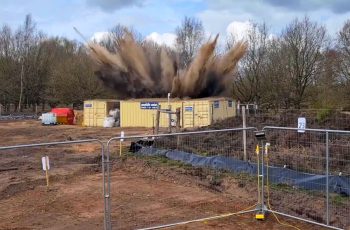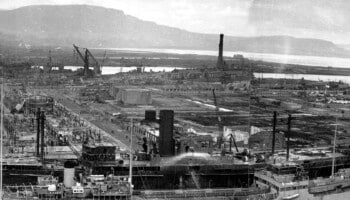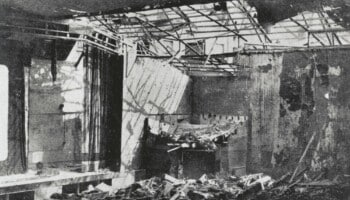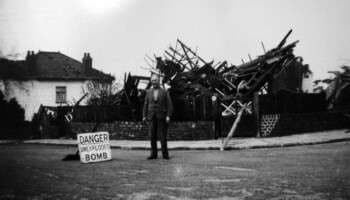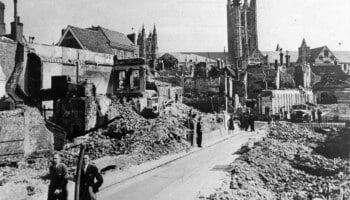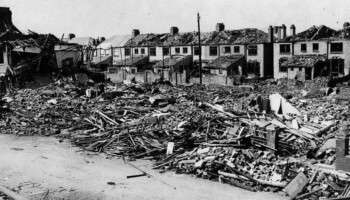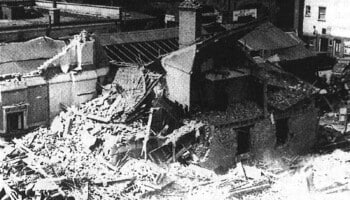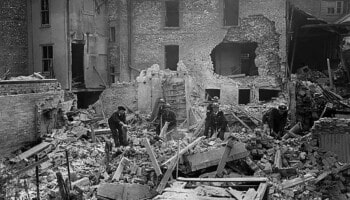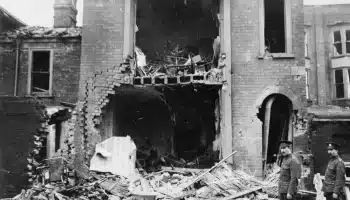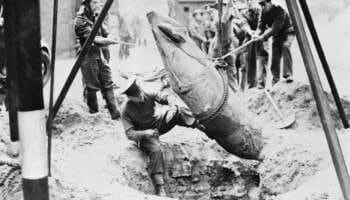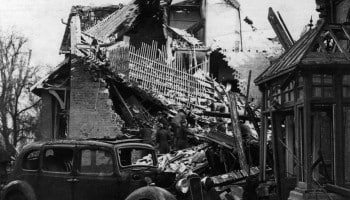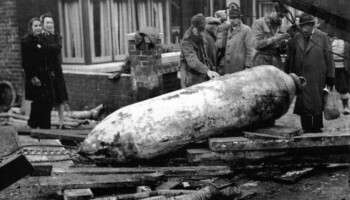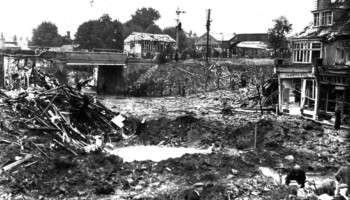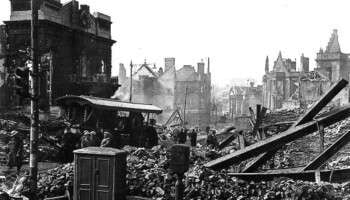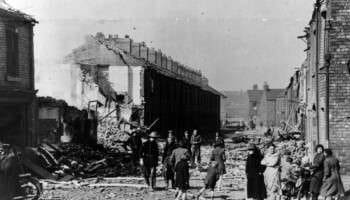Home » Resources » UXO City Guides »
UXO City Guide
Home Office Bombing Statistics for Hull
Record of German Ordnance dropped on the County Borough of Hull
High Explosive Bombs (All types)
1,213
Parachute Mines
101
Oil Bombs
4
Phosphorus Bombs
70
Fire Pots
4
Pilotless Aircraft (V-1)
0
Long-range Rocket Bombs (V-2)
0
Weapons Total
1,392
Area Acreage
14,091
Number of items per 1,000 acres
98.8
Why was Hull targeted and bombed in WWII?
Kingston upon Hull, often referred to as ‘Hull’, is located in the East Riding of Yorkshire upon the Humber Estuary. Hulls history is that of a Port Town, with key links to both mainland Europe and other counties.
The importance of the Hull Docks to the UK’s maritime and industrial infrastructure and its close proximity to mainland Europe – approximately 360km away – led to Hull being a Key Target of the Luftwaffe bombing campaign in the early years of WWII.
Luftwaffe target imagery clearly identifies targets like the Alexandra and King George Docks, indicating that Hull had been designated a target for bombing before the war had even started.
As the war progressed, the Luftwaffe moved away from only targeting areas of military or industrial importance and commenced the indiscriminate bombing of Civilian areas of cities in order to reduce the morale of the public.
The result was the heavy bombing of not only the dockyards but the entire borough as Luftwaffe aircraft could easily reach the city from airfields in France and Belgium, with the Humber Estuary making navigation – even at night – an easy task.
Home Office Bombing Statistics for Hull
Home Office bombing statistics indicate that nearly 1,400 items of ordnance where recorded as dropped on Hull over the course of the war. This included an estimated 1,213 High explosives bombs and over 100 incendiary devices – a density of almost 99 items per 1,000 acres.
However, this does not account for any bombs that fell unrecorded during these heavy raids, many of which fell into areas that had already been previously bombed.
These unidentified items, falling unnoticed are what pose a potential risk to construction today.
Major bombing raids in Hull
Throughout the war, Hull was subjected to approximately 72 bombing raids with more than half of these occurring in 1941.
Some of the heaviest raids occurred on the following dates:
- 18/19th March 1941 – which included 134 50kg bombs and 117 250kg bombs dropped over the city centre,
- 9th May 1941 – which included 113 50kg bombs and 49 250kg bombs dropped over the dockyard area of the city
- 18th July 1941 – which included 92 50 Kg bombs and 55 250kg bombs dropped over East Hull.
These were not the only bombs dropped on Hull, with many different types of ordnance dropped throughout the war.
Local Bomb Maps for Hull show a significant density of bombing in the city’s centre and around the docks – which are both within close proximity to the Humber Estuary.
Despite this high level of bombing and damage recorded in Hull during the war, much of the public outside of the city where unaware of the devastation caused. This was due to the decision to only refer to a ‘North-East Town’ in newspaper and radio address. This was decided to prevent the German Forces learning how effective there bombing campaign was.
However, these maps also show that the bombing was not restricted to the city’s landmarks and areas of importance, with reports of bombs far out of the city centre – such as the village of Cottingham which was also bombed.
In fact, there are few areas of the city in which bombs are not recorded. This density of bombing led to Hull being labelled as one of the most bombed cities in the country, with some estimates indicating that over 95% of structures in the city centre were destroyed or damaged.
This is the highest percentage for a city outside of London, with much of the city having to be rebuilt in the post-war period.
Can UXO still pose a risk to construction projects in Hull?
The primary potential risk from UXO in Hull is from items of German air-delivered ordnance which failed to function as designed. Approximately 10% of munitions deployed during WWII failed to detonate, and whilst efforts were made during, and after the war to locate and make UXBs safe, not all items were discovered. This is evidenced by the regular, on-going discoveries of UXO during construction-related intrusive ground works across the UK – not just in Hull.
Occasionally items of British explosive ordnance are also encountered – often associated with WWII defensive measures or Home Guard operations. However, there were few military related facilities in or around the city.
I am about to start a project in Hull, what should I do?
Developers and ground workers should consider this potential before intrusive works are planned, through either a Preliminary UXO Risk Assessment or Detailed UXO Risk Assessment. This is the first stage in our UXO risk mitigation strategy and should be undertaken as early in a project lifecycle as possible in accordance with CIRIA C681 guidelines
It is important that where a viable risk is identified, it is effectively and appropriately mitigated to reduce the risk to as low as reasonably practicable (ALARP). However, it is equally important that UXO risk mitigation measures are not implemented when they are not needed.
While there is certainly potential to encounter UXO during construction projects in Hull, it does not mean that UXO will pose a risk to all projects. Just because a site is located in Hull does not mean there is automatically a ‘high’ risk of encountering UXO. It really does depend on the specific location of the site being developed.
A well-researched UXO Risk Assessment will take into account location specific factors – was the actual site footprint affected by bombing, what damage was sustained, what was the site used for, how much would it have been accessed, what were the ground conditions present etc.
It should also consider what has happened post-war – how much development has occurred, to what depths have excavations taken place and so on. This will allow an assessment of the likelihood that UXO could have fallen on site, gone unnoticed and potentially still remain in situ.
Recent UXO discoveries in Hull
Since the war, many items of UXO have been discovered across multiple cities within the UK, with Hull no exception. See the news articles below about UXO incidents and discoveries from national and local press in Hull.
1st Line Defence keep up-to-date with relevant and noteworthy UXO-related news stories reported across the UK, and you can browse through these articles using the buttons below.
Get UXO risk mitigation services from a partner you can trust
UXO City Guides
Got a project in Hull? Not sure if there is a UXO risk? Need advice but not sure where to start?
If you need general advice about UXO risk mitigation in Hull, contact us and we will be happy to help.
Contact Us
* indicates required fields




